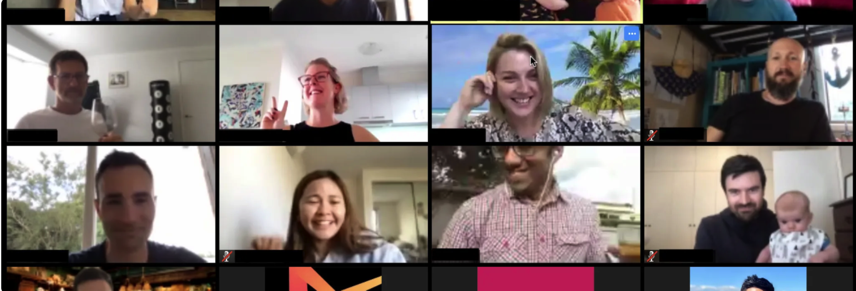As most of us are indoors due to the COVID-19 pandemic, nearly every interaction we are having for business or pleasure is happening online – and it’s mostly happening on virtual conferencing tools like Zoom.
While this presents many opportunities to connect with our family, friends and colleagues during a difficult time, it has also packed our daily routines with non-stop video calls. Frankly, it can be quite exhausting.
At Airwallex, we embrace a culture of inclusive decision-making across our global teams. We are proud of this culture as we value the opinion of our employees no matter where they are based. This does come with some challenges in today’s climate, however. We use instant messaging tools like Slack for quick conversations and swift decision-making. For important decisions that require more thought, a meeting was typically organised, stakeholders were invited, and we’d spend a significant proportion of the meeting getting up to speed on the issue at hand. This worked great for us before COVID-19, but with our current remote practices, our usual method has led to schedules fully filled up with Zoom meetings.

Craig_Rees, Airwallex VP of Cards, Payments & Engineering
This is not an effective and productive approach to getting things done. In order to be successful in the remote working environment, we need to ensure that our working practices can utilise the skills and experience of our global teams while providing ample time to complete their day-to-day tasks.
To overcome the challenge of ‘too many virtual meetings’, we need to carefully consider how we can continue with a goal of inclusion and at the same time be mindful of everyone’s workload. One of the ways to mitigate this is to inculcate a document-first approach – a mechanism by which everyone can contribute in their own time.
A different approach – typing before talking
Most of us instinctively “call a meeting” as the initial action to kicking off a discussion. A document-first approach encourages us to instead start with a document covering all the relevant points and requesting input and feedback from all interested parties.
In this document, questions can be asked and answered, the discussion can be had and tracked.
After an appropriate period, we can review outstanding items and then call a meeting to align, noting that everyone involved will be fully across the background of the topic. This point of this is to limit a conversation in a meeting to the only points that need a deeper interaction.
By moving to a document-first approach, we will free individuals up to contribute in their own time and only bring stakeholders together when the domain is fully understood by all parties, leading to less wastage and greater effectiveness.
The medium
Offline documents will not work in this approach. Choose an online collaborative tool with real-time multi-user input, co-authoring and commenting, such as Confluence or Google Docs. At Airwallex, we use a combination of both. A Google Doc set up in an individual drive can get orphaned and lost, hence we recommend creating these in shared Google drives or having them linked back to a Confluence page for easier discovery later down the track.
Be wary of long documents
With this proposed new approach, I am wary of ending up back in the 1980s where software development was driven by a hundred-page functional specification. This is definitely not what I am advocating for. Documents should have a clear scope, a defined outcome and not be too long.
I recommend sticking to two types of documents – the first being a one or two-page ‘abstract document’ that covers a high-level topic, for example, when and where an idea is starting out. The second type of document can delve into the details and can span 10 pages if necessary.
When you do eventually have a meeting
Pre-meeting: When it is time to get people together, make full use of the time. Set an agenda and indicate the expected outcomes from the meeting so that the session can be as productive as possible.
During: Do not just listen – take notes. Document points, questions, actions and decisions as you go, as this can help with comprehension, especially when participants are remote.
Post-meeting: Send out an update, confirm what was decided, document any follow on actions. This will ensure that those participants who didn’t come to the meeting can still be fully across and involved in the process.
A number of teams at Airwallex have already started to implement this approach, and we’re already seeing the benefits. People appreciate it when we are respectful of their time, and this, in turn, fosters greater productivity in a virtual environment.
- This post first appeared on the Airwallex blog. You can read the original here.
* Craig Rees is Vice President of Cards, Payments & Engineering at Airwallex.




















Trending
Daily startup news and insights, delivered to your inbox.